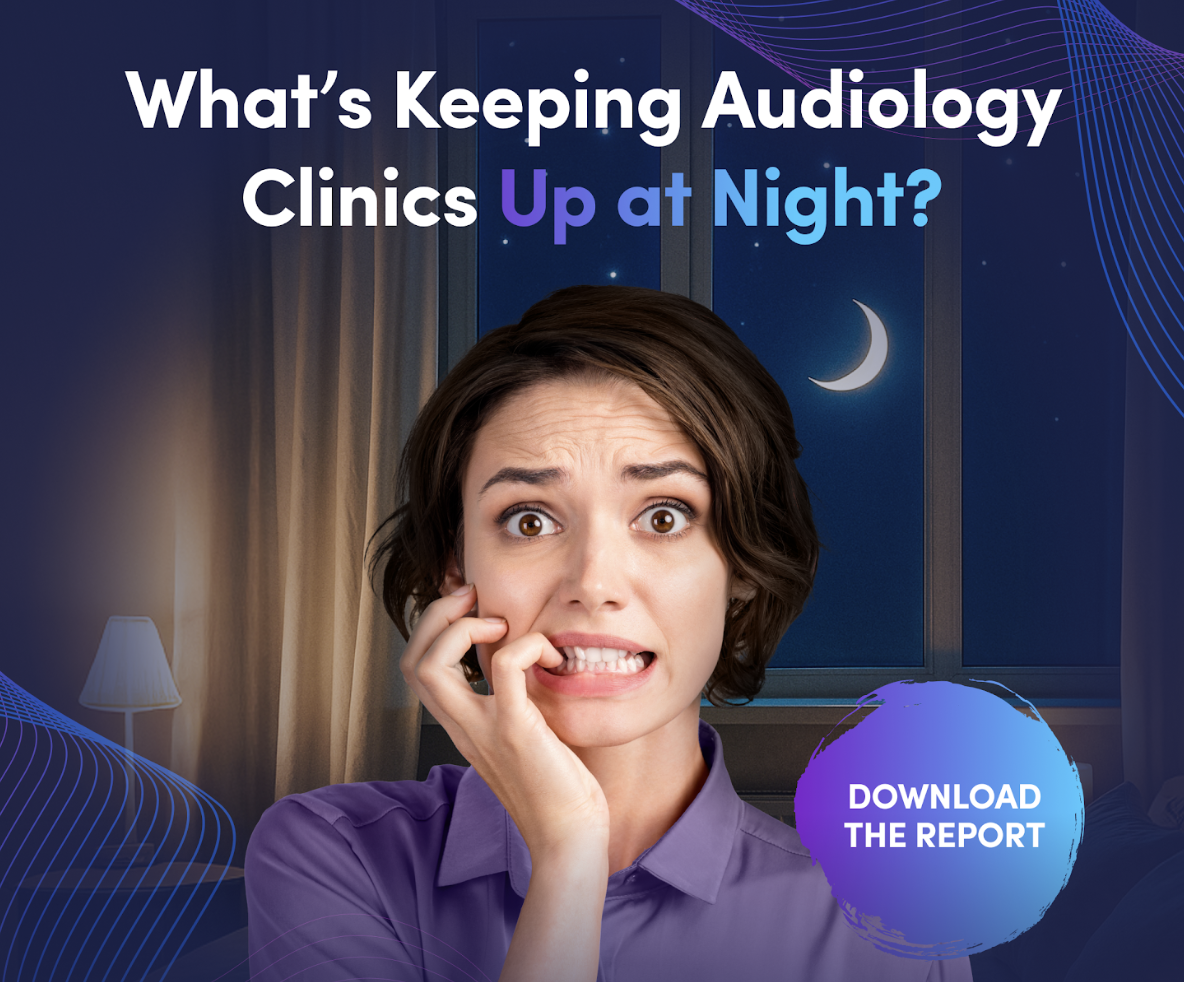The benefits of telehealth for patients are clear, but what about the benefits of telehealth for audiologists? Read on for three key ways telehealth can benefit your audiology practice.
Telehealth: A Win-Win for Patients & Physicians
Telehealth, also called telemedicine, has been steadily growing in popularity over the last decade but saw a massive increase in utilization with the COVID-19 pandemic starting in 2020. Telehealth allows physicians and other healthcare specialists to meet with patients virtually through protected online portal systems, and, since 2020, more and more patients are choosing telehealth over traditional in-person visits when the option is available.
There are a few key reasons why patients opt for telehealth, even post-pandemic, including convenience, decreased travel costs, and comfort. Patients like being able to meet with their healthcare providers from the comfort of their homes and not having to spend the time and money required to visit their doctor in their office.
However, some physicians, especially those within private practices, are still hesitant to offer telehealth to their patients for a number of reasons — maybe they feel it’s too time-consuming to set up within their practice or they feel it’ll take away from the patient interactions that matter most.
For providers still resistant to telehealth, there are three key reasons why telehealth can actually benefit the practice, increasing efficiency and potential for growth without taking away from critical patient engagement.

The Benefits of Telehealth for Audiology
The benefits of telehealth for patients are clear, but what about the benefits of telehealth for providers, especially those in hearing care? While they may not be as clear at first, the potential benefits of telehealth for audiologists are notable and can even address some of the challenges practitioners face when seeing patients in their practice.
1. Lower Patient Costs & Decrease No-Show Appointment Rates
As a physician, it can be extremely frustrating when you have an appointment booked with a patient and the patient doesn’t show up. While telehealth won’t completely eliminate no-show appointments, giving patients an option that doesn’t require traveling to your office can certainly decrease the number of no-shows you see in any given week.
Additionally, by moving shorter, less hands-on appointments to a virtual setting, costs to service a patient decrease, benefiting the clinic’s bottom line.
2. Free Up Clinician Time for Hands-On Appointments
There are a few different appointment types audiologists are likely to have on any given day — from hearing tests to hearing aid adjustments and fittings. But, not all of these appointment types require something hands-on, so moving these appointments to a virtual setting can free up time for the appointments that really need to happen in person.
Video chat allows audiologists to perform patient pre-screenings, have general check-ins with patients, conduct follow-up appointments, or even coach patients through hearing aid troubleshooting without losing that face-to-face engagement and relationship-building that matter most.
3. Expand Reach to Serve More Patients, Increasing Revenue
While it’s important that patients attend some appointments in person — like those requiring Noah — access to telehealth makes it easier for patients who live in rural areas to engage with their hearing care team, expanding the clinic’s service radius. With so many people not seeking hearing care when they need it, removing barriers is important, and telehealth can remove one of the largest ones: distance from their hearing care provider.
Furthermore, telehealth can improve patient retention, as patients can still meet with their provider virtually, even if they move further away from the clinic or can no longer drive themselves to appointments.
Lastly, sometimes hearing aid issues pop up with little to no warning, and telehealth allows Audiologists to troubleshoot issues with devices without taking up a valuable appointment spot and allows patients to get back to functional hearing faster and more conveniently.
How to Set Up Telehealth Services for Your Practice
Offering telehealth for the first time for your practice can feel daunting to a practice owner or manager who isn’t confident with technology, but Sycle’s integrated, HIPPA-compliant telehealth software makes it easy to set up and start offering telehealth in an existing clinic.
Once your Sycle software is set up and integrated with your practice, you can easily add telehealth to any appointment and your patient will receive an email reminder and a link to join 30 minutes before their appointment begins.
What makes Sycle’s telehealth platform unique is that it integrates seamlessly with other critical audiology practice management capabilities, like patient scheduling and communications, Noah sync, patient financing and insurance.
Ready to see how telehealth can benefit your practice? Request a demo today.
In today’s technology-first world, patient expectations are higher than ever, and telehealth offers convenience for patients while helping Audiologists improve their bottom line and run their practice more efficiently.
Sycle is the leading audiology software solution built for owners and managers looking to level up their operations and improve patient experience. We make setting up telehealth as easy as possible so physicians can spend more time with their patients.



